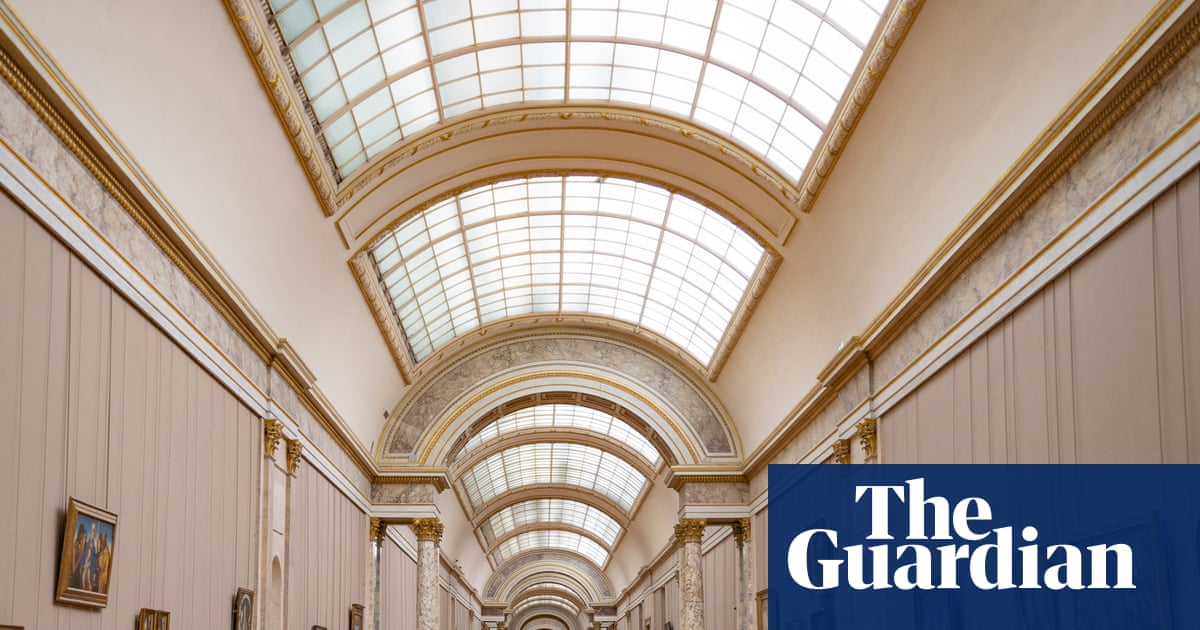The complaint that cynics often make about modern art is that most of it looks as though it were made by children. (If your 10-year-old is pulling out crumpled Kandinskys from their schoolbags on a regular basis then lucky you, I say.) But what about art criticism? Could a child’s understanding of art be as radical as John Berger’s or as wise as Sister Wendy’s, for instance? Art historian Thomas Schlesser thinks so. His debut novel, a bestseller in France, has been translated into 38 languages. Perhaps in one of them it lives up to the hype.
In Mona’s Eyes, a 10-year-old girl embarks on an artistic adventure with her grandfather, visiting the most famous works in Paris museums over the course of a year. They pledge to gaze at these works intently and to discuss them deeply. The resulting conversations are intended to be charming and moving. The kindest observation to be made about this book is that they are not.
Pitched as a kind of Sophie’s World for art history, with the fabular shades of The Little Prince, the story begins with Mona struck by a sudden and mysterious episode of blindness. Although Mona recovers quickly, her parents fear she may lose her sight permanently and consult with a doctor. Enter Henry, Mona’s maternal grandfather, otherwise known as Dadé. Instead of taking Mona to appointments with a psychiatrist as instructed, he unilaterally decides that what Mona really requires is a treatment of his own devising. Every Wednesday Mona and Dadé will inspect one great work of art, making their way through the Louvre, the Musée D’Orsay and the Centre Pompidou. As an educational scheme, it’s not a terrible idea. The trouble is that Dadé is a terrible person and Schlesser seems entirely oblivious to it.
Schlesser dedicates his novel “to all the grandparents of the world”, and yet the grandparent he imagines here behaves in a deeply objectionable way. Schlesser depicts him flatteringly: a dashing octogenarian, a former photojournalist, a figure of towering intellect and worldly experience. But without the consent of Mona’s parents, he acts with alarming impunity and irresponsibility. He deems that Mona’s childhood lacks beauty and intends to aid her in “the refinement of taste, the development of sensibility”, but only after inwardly sneering at the things she loves, her bedroom with its “plastic jewellery, that cartoon-princess-style furniture … The acidic colours of all this clutter choked him.”
Partway through the novel, an eavesdropping art curator interrupts them on their way to see Monet’s Saint-Lazare station paintings. She fulsomely celebrates their insights, bewilderingly declaring their interaction “the reward of an entire career”, but Mona and Dadé’s exchanges during these excursions are uniformly pedestrian. Grandeur poses as profundity. “This painting tells us,” Dadé intones, “about the wonderful thrill of imagining things, ever more deeply, and invites us to trust this prodigious faculty, which allows the invisible to become visible and the improbable possible.”
In between the gnomic phrases and metaphysical abstraction, Dadé marvels at Mona’s apparently unique child’s-eye view. In reality, her contributions are largely limited to exclamations such as “Got it, Dadé!” or clumsy prompts: “Tell me more about that luminosity, Dadé”. Dadé’s analysis of the works, instead of being enriching and enlarging, feels mechanistic. Chiaroscuro in a self-portrait by Rembrandt, he decides, is the ideal way to teach Mona how to challenge “binary concepts of good and evil”.
These are ideas understandably beyond poor Mona, who on seeing a photograph by Julia Margaret Cameron observes: “That sure is different to a photo taken on a phone.” The problem is that Schlesser seems to be working with a diminished idea of anything a child might do, imagine or desire. Minor plotlines involving Mona’s schoolfriends, her alcoholic father, the frankly weird doctor who is directing her treatment and a mystery about her dead grandmother reduce her to a vehicle for a tedious plot, rather than investing her with interiority. As a child muse, she is puzzlingly charmless, unequal to the weight she is tasked to carry in this novel.
Schlesser seems like a decent art critic and he has sensible, informative things to share about the works he has selected here, but his clunky novel is mostly concerned with affixing life-affirming lessons to masterpieces rather than exploring any real intellectual stakes. And in an age of brilliantly intelligent art writing (TJ Clark, Laura Cumming) and stirring meditations on seeing (Ann Wroe, Lavinia Greenlaw), Schlesser’s prose and Dadé’s sermons are disappointingly didactic.
Hildegarde Serle’s English translation adds to the problem. “Holy smokes,” the elderly Dadé improbably exclaims at one point; Manet is awkwardly described as coming from “a swanky social milieu”; towards the end of the novel, “the music of spring wafted in the air”. An undeniable strain of sentimentalism runs throughout, manifest in the prose and the sensibility. It may seem cruel to be critical about a book that is so transparently well-meaning, but this is not to deny the redemptive power of art. Cynicism is an attitude that isn’t inherently cool or wise, but neither does sincerity have to be as unsophisticated and simple-minded as it is here. Do take a child to a gallery. But go for the cake and the chaos rather than lessons in chiaroscuro.
